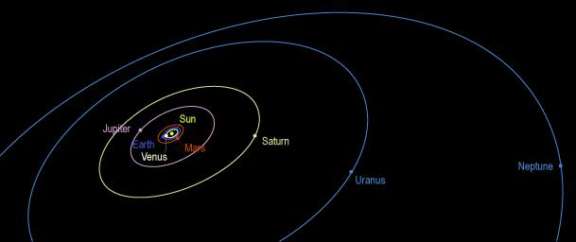Bruce Murray Space Image Library
The Solar System Family Portrait

Voyager 1's final photographic assignment was to capture family portraits of the Sun and planets. In 1990, then-Planetary Society President and Voyager Imaging Team member Carl Sagan had been working for a decade to get these pictures taken. Voyager 1 had swung past Saturn in November 1980, and was flung by the ringed planet's gravity high out of the plane of the ecliptic. On February 14, 1990, Voyager 1 aimed its cameras at a string of small colored dots clustered just to the right of the constellation Orion. The spacecraft was then 32 degrees above the ecliptic and nearly 6 billion kilometers from the Sun. It took 39 wide-angle views and 21 narrow-angle images. The narrow-angle camera, with a lens resembling a telephoto, took three consecutive images through colored filters of seven of the nine planets. This enabled image processors at the Jet Propulsion Laboratory to construct the colored inset portraits of the planets. But the smallest planets avoided having their pictures taken. Mars and Mercury were lost in the glare of the Sun, while Pluto (then still considered a planet) was too faint to be visible.
Here's a diagram showing Voyager 1's perspective on the planets in their orbits.



 Explore Worlds
Explore Worlds Find Life
Find Life Defend Earth
Defend Earth

